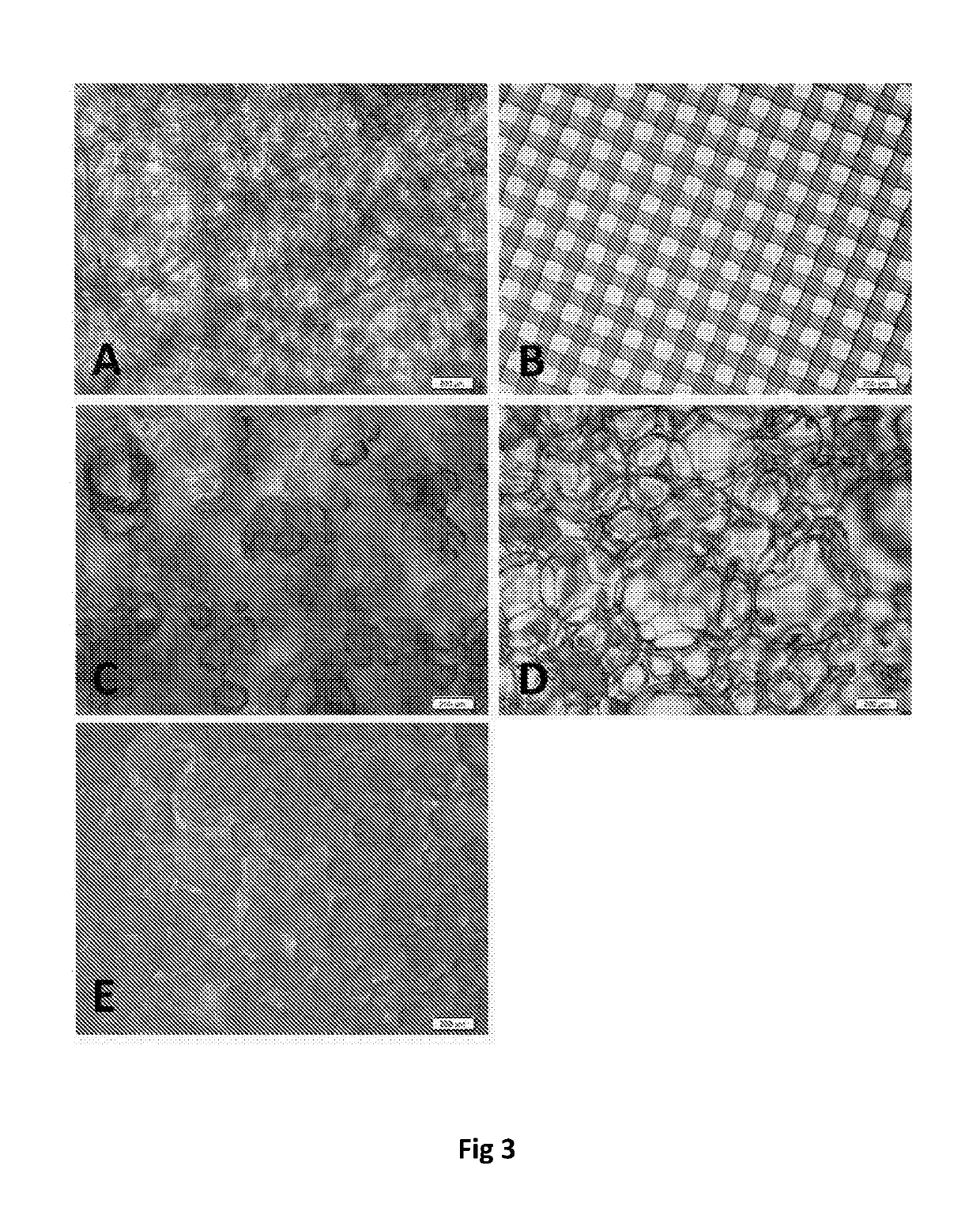Gene and protein expression properties of adherent stromal cells cultured in 3D
a technology gene expression properties, which is applied in the field of gene expression and protein expression properties of adherent stromal cells cultured in 3d, can solve problems such as biochemical alteration of as
- Summary
- Abstract
- Description
- Claims
- Application Information
AI Technical Summary
Benefits of technology
Problems solved by technology
Method used
Image
Examples
example 1
Preparation of Placental ASC-2D and ASC-3D Cell Samples
Initial Seeding of ASC
[0266]Placental ASCs were prepared as previously described. Initial seeding in tissue culture plate surfaces (“TCPS”) flasks and packed bed spinners with Fibracel disks was as follows. Briefly, ASCs (passage 4 cells) at 5-10×106 were thawed and ASC were plated at 1.5×106 in each of 3 triple flasks with full DMEM. After 3-4 days post first seeding (-70% confluence) the cells were harvested and used to seed 5 triple flasks. Three to four days following the second seeding (˜70% confluence), cells were harvested and seeded four spinners with 8.1×106 ASC each and 4 175 cm2 flasks with 0.5×106 ASC each. Three days after the third seeding, the four flasks were harvested and seeded into 8 flasks (175 cm2) with 0.5×106 ASC each.
TCPS Flasks
[0267]After 3 additional days, i.e., once cells in flask reached 70-80% confluence two flasks were used for RNA collection, two flasks for cell lysate, and two flasks for collectio...
example 2
Selection of Genes and Proteins for Differential Analysis
[0276]A panel of genes and proteins that are potentially differentially regulated in placental ASC-3D vs -2D cells was determined based on consideration of relevant biological pathways. The screening panels are presented in Tables 1-15, above.
example 3
Analysis of Proteins Secreted into Culture Medium and in Cell Lysates
[0277]Conditioned medium and cell lysates were prepared as described in Example 1 was analyzed using RayBio® Human Angiogenesis and Human Inflammation Arrays (G series) (RayBiotech, Inc.) arrays according to the manufacture's instructions. Fluorescence was detected using a laser scanner and normalized, also according to the manufacture's instructions.
[0278]Tables 16 and 17 summarize the results of this experiment.
[0279]
TABLE 16Proteins Up-regulated in 3D Culture MediumDataPD280311PD061210t-TestsProteinCM 2DCM 3DCM 2DCM 3DPD280311PD061210Angiogenin425.54270.48555.3NA0.0020492233.64425.58547.84189.75055.910860808.223938.94803.510846.4AVG808.222696.954625.099594.01St DevNA1933.79391.901620.78IL-64820.801888.80.0004794819.201651.687.45971.602710.6257.65971.702284.2AVG172.565395.8502110.07St DevNA814.300510.98Angiopoietin 1622.55814.51013.315250.6021760.0041046651.1814.2991.41428.545.351213.4705.42217.5173.91128862.4190...
PUM
 Login to View More
Login to View More Abstract
Description
Claims
Application Information
 Login to View More
Login to View More - R&D
- Intellectual Property
- Life Sciences
- Materials
- Tech Scout
- Unparalleled Data Quality
- Higher Quality Content
- 60% Fewer Hallucinations
Browse by: Latest US Patents, China's latest patents, Technical Efficacy Thesaurus, Application Domain, Technology Topic, Popular Technical Reports.
© 2025 PatSnap. All rights reserved.Legal|Privacy policy|Modern Slavery Act Transparency Statement|Sitemap|About US| Contact US: help@patsnap.com


